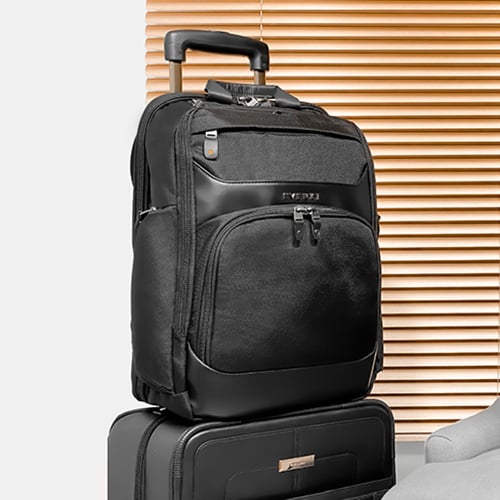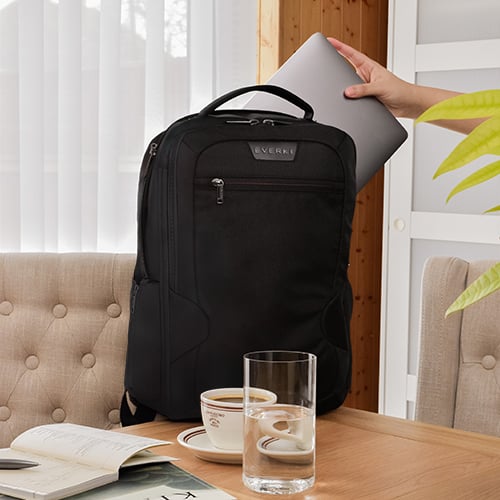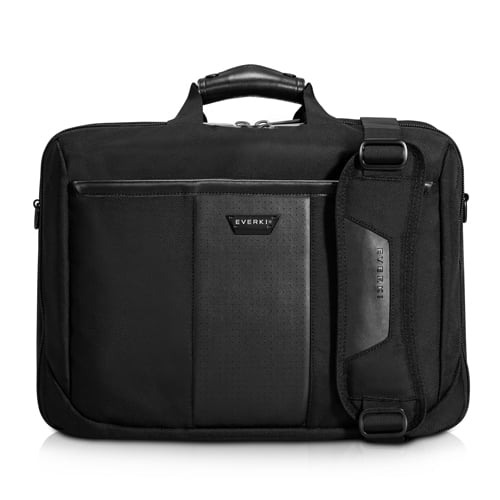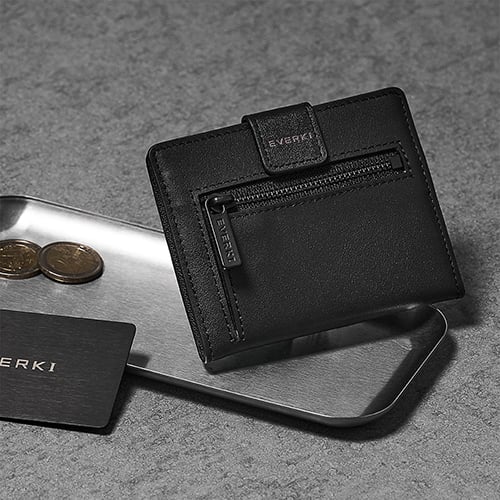Asia Pacific
FREE Shipping & Returns for orders over $75
A Guide to Smart Luggage and Airline Regulations
Smart luggage looks very useful. It can charge your phone, track your bag, and even lock itself. Many people like these new bags because they make traveling easy and safe.
But there is a problem. Smart luggage rules are not the same for every airline. Airline regulations can be hard to read and understand. If you do not follow the right rules, you may have to open your bag or leave it at the airport.
In this guide, we are going to give you clear and simple answers. You will learn the latest airline regulations and know how to travel with smart luggage without stress.
30 Seconds Summary
- Smart luggage is any suitcase with electronics like a GPS tracker, USB charging port, Bluetooth lock, etc.
- Airlines aren’t anti-tech; they’re anti-fire. The risk comes from the lithium-ion battery in the cargo.
- Your smart luggage battery must be removable if the bag is ever checked.
- If the battery is within limits and stays in the cabin, it is usually fine for a carry-on. For checked smart luggage, you must remove the battery first and take it with you.
What is Smart Luggage?
Smart luggage is a suitcase that has extra technology to help travelers. It is different from a normal bag because it comes with built-in electronic parts that make travel easier and safer.
Some smart luggage has a GPS tracker so you can always know where your bag is. Many bags also have a USB charging port and a power bank inside. This means you can charge your phone, tablet, or laptop while waiting at the airport. Most of these power banks use a lithium-ion battery, which is small and light but strong enough to keep your devices powered.
Other standard features include a Bluetooth lock that you can open with your phone, and a built-in weight scale that tells you if your bag is too heavy before you check in. These features save time, give peace of mind, and make your trip smoother.
Smart luggage is becoming popular because it combines travel needs with modern technology in one bag.
The Battery Problem: Why Airlines Are Cautious
Even though smart luggage might sound useful, airlines are extremely cautious. Here is why:
Lithium-ion batteries can overheat and enter thermal runaway. In a cargo hold, that is a serious fire hazard. Crews can manage an incident in the cabin; however, in the hold, it is far riskier.
That is why FAA regulations and IATA guidelines put tight limits on how batteries travel.
The FAA (Federal Aviation Administration) and the IATA (International Air Transport Association) both agree that lithium-ion batteries are hazardous materials.
- The FAA says spare lithium batteries, like power banks, must always stay in your carry-on bag. They cannot go in checked luggage. The battery ends, called terminals, must also be covered or protected so they don’t touch metal objects like keys or coins, which could cause a spark.
- There are also size rules: Most batteries up to 100 watt-hours are allowed without any problem.
Larger batteries between 101–160 Wh need airline approval before you fly, and passengers can usually only carry two spares. - IATA’s 2025 passenger guidance explains smart luggage as a type of portable electronic device (PED), like a laptop or tablet. It says that sometimes the battery must be removed from the bag and carried in the cabin instead. It also sets special, tiny limits for very small tracker batteries, such as the ones used in smart luggage location tags.
If your route often forces gate-checks, a wheeled laptop backpack from Everki can be a lifesaver. Giving you the convenience of rolling it or wearing it.
TSA & FAA Smart Luggage Rules: A Clear Breakdown
Both TSA and FAA have smart luggage rules that you have to follow. The TSA (Transportation Security Administration) checks bags at the airport. The FAA (Federal Aviation Administration) sets safety rules for flights. Here is a simple and clear breakdown of these rules:
The Golden Rule: The Battery Must Be Removable
- Every smart luggage battery must be a removable battery if the bag is checked in.
- If the battery is non-removable, many airlines will not accept your bag.
- This is the most important rule in both TSA smart luggage rules and the FAA smart luggage policy.
Are you looking for a compliant personal item that makes your business travels easy? Browse professional laptop bags from Everki, built for airport life.
Carry-On vs. Checked Luggage Policies
Carry-on:
- Allowed when the battery is within FAA limits and the device fits airline dimensions. Keep the battery installed or with you in the cabin; however, it should never be kept in the hold as a “spare” inside a checked bag.
- TSA also clarifies that suitcases with batteries are allowed on the plane if the battery is removable and carried per rules; however, power banks should be kept in carry-on only.
Checked baggage
- If your bag must be checked in, you must remove the battery.
- The battery should travel with you in the cabin, never in the cargo hold.
- Airlines may ask you at the counter or gate to show that your battery can be removed.
Micro-devices & trackers
- Small bag trackers are allowed, but they have their own size rules.
- FAA allows only very small batteries (up to 0.3 g lithium metal or 2.7 Wh lithium-ion).
- Always check if your tracker meets these limits before packing it in checked baggage.
Unsure if your case fits overhead bins? See the American Airlines size of carry- on before you pack.
Major Airlines Smart Luggage Policies
Policies are always evolving. Here is what major U.S carriers say about smart luggage. Remember to always double-check the official page before your flight and search for the smart luggage policy to be safe.
American Airlines Smart Luggage Policy
- American Airlines allows smart luggage only if the battery can be removed.
- If you are checking the bag or leaving it at the gate, you must remove the battery and carry it into the cabin.
- The airline does not allow smart ride-on bags or hoverboards.
- For more details, you can always visit the American Airlines restricted items page.
Go through checkpoints faster with checkpoint-friendly laptop bags from Everki. These bags open flat to help speed the screening process.
Delta Air Lines Smart Luggage Policy
- Delta permits smart luggage only if the battery is removable.
- If you check the bag, the battery must be taken out and kept in your carry-on.
- Non-removable batteries are not allowed at all, either as carry-on or checked baggage.
- Delta also bans motorized “rideable” suitcases.
United Airlines Smart Luggage Policy
- United follows the FAA rules closely.
- Smart bags must have a removable battery.
- Spare batteries or power banks can only travel in your carry-on, and their terminals must be protected.
- If your smart luggage has to be gate-checked, you must take the battery out first.
Southwest Airlines Smart Luggage Policy
- No lithium batteries, power banks, or e-cigs in checked bags.
- Spare batteries and power banks must go in carry-on. Up to 20 allowed, max size
- 100Wh each. Protect the ends from short circuit.
- Power banks must be in plain sight if used on the plane.
- E-cigs/vapes are carry-on only, max two per person, no use or charging onboard.
- One normal lighter and one book of matches allowed in carry-on. No torch lighters or lighter fluid.
Your Pre-Flight Smart Luggage Checklist
Here is a smart luggage checklist that you can use to avoid any drama at the airport:
- Confirm you have a smart luggage with a removable battery. If the battery cannot come out, think about using another bag.
- Check battery capacity. Under 100 Wh is standard. 101–160 Wh needs airline approval (max two spares). A battery capacity of over 160 Wh is not for passenger baggage.
- Label & protect. Cover the terminals and keep spares in sleeves or the box they came in.
- If you’ll check the bag, remove the battery. Keep it in your cabin item; never in the hold.
- Turn off extra features. Switch off things like a Bluetooth lock or remote lock if asked by staff.
- Pack smart cables. Bring a short cable for the USB charging port; avoid loose metal objects around batteries.
- Track responsibly. If you are using a GPS tracker or Electronic bag tag, you have to make sure that it meets ≤0.3 g lithium metal or ≤2.7 Wh if checked.
- Review airline pages. Always search the smart luggage policy for your carrier the night before.
- Carry a backup backpack. If your bag is taken at the gate, you will want a professional personal item. A laptop backpack for travel from Everki will let you move with ease.
Read our TSA checked bag rules guide so you are ready for surprises.
Frequently Asked Questions about Smart Luggage
Q: Can you take smart luggage on a plane?
A: Yes, you can take smart luggage on the plane if the battery meets size limits and stays in the cabin. If the bag is checked, the battery must be removed and carried with you.
Q: Why do airlines ban smart luggage?
A: Airlines do not ban smart luggage; they are just limiting lithium-ion battery risk in the cargo hold. The restrictions are safety rules, not anti-tech rules.
Q: Do you have to remove the battery from smart luggage?
A: If the bag is checked or gate-checked, yes, the battery must be removed and kept in the cabin. That is core to the FAA smart luggage policy and TSA smart luggage rules.
Q: Are suitcases with chargers allowed on planes?
A: Yes, if the charger is a Power bank within Wh limits and carried in the cabin. Power banks count as spare batteries; they are never allowed in checked bags.
Q: How to travel with smart luggage?
A: If you are planning to travel with smart luggage, you should choose smart luggage with a removable battery, verify the Wh rating, and know your airline’s policy. Always keep spare batteries in a carry-on, keep the terminals protected, and devices switched off when required.
Over to You
Flying with smart luggage does not have to be hard. The rules are clear once you know them. Here are the three main points to always remember:
- The battery must be removable. If you check your bag, you must take the battery out and carry it with you in the cabin. This is the most important rule.
- Spare batteries and power banks go in carry-on only. They cannot travel with checked baggage because of fire risk. Always pack them safely in sleeves or covers.
Airline policies are mostly the same. TSA and FAA set the main rules, and airlines follow them with only small changes. Even so, it is smart to check your airline’s website before every trip.
Travel should feel easy, not stressful. That’s why Everki smart travel bags are designed to fit these rules from the start. They have dedicated tech pockets, secure compartments, and travel-friendly layouts that keep your laptop, chargers, and battery pack safe.
Explore Everki’s collection of travel-ready laptop bags and accessories that keep you powered up and prepared for any journey.







